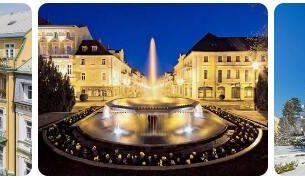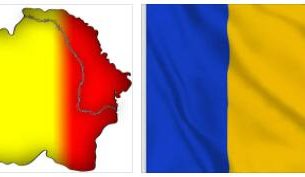Lithuania – the largest country in the Baltic States
With an area of 65,301 km² – with around 3.35 million residents, Lithuania is the largest country of the three Baltic states and has been a member of the European Union since May 1, 2004. The country was involuntarily part of the USSR until 1991 after the Soviets annexed Lithuania in World War II. As a result, the Lithuanian population experienced great suffering and a deep and formative turning point in history. Lithuania’s history begins 2,000 BC When the first settlers settled here. The name Lithuania first appeared around 1000 AD and around 1200 the German Order came to power and influence here.
The geographic center of Europe is located around 20 kilometers east of the capital Vilnius. The Baltic Sea bordering Lithuania also has the most important port in the Baltic States, and Klaipėda, the former Memel, is also served from Germany.
The Curonian Spit and the Curonian Lagoon, through which the Memel reaches the Baltic Sea, are of incredible beauty. The Curonian Spit is a tongue of land around 98 kilometers long, which extends as a peninsula from Klaipėda to Lesnoje. Around 52 kilometers of the spit belong to Lithuania and 46 km to Kalinigrad (Russia). In addition to the Curonian Spit, the numerous national parks such as Zematija (Northwest Lithuania, Dzukija (Southeast Lithuania) or Aukstaitija Park (Northeast Lithuania) must not be forgotten and are worth a visit. The summers in the country are warm and the winters cold.
| Name of the country | Republic of Lithuania (Lietuvos Respublika) |
| Form of government | Parliamentary republic |
| Head of state | President, Dalia Grybauskaitė (since May 17, 2009) |
| Geographical location | In Eastern Europe, more precisely: in the Baltic States |
| National anthem | Lietuva, tevyne musu |
| Population | about 3.2 million (Credit: Countryaah: Lithuania Population) |
| Ethnicities | approx. 83.5% Lithuanians, approx. 6.3% Russians, approx. 6.7% Poles, approx. 1.2% Belarusians, approx. 0.7% Ukrainians, approx. 0.1% Latvians and one German minority |
| Religions | predominantly Catholics (approx. 80%), also Protestants (approx. 1.9%), Russian Orthodox (approx. 4.1%) and Jews |
| Languages | Lithuanian |
| Capital | Vilnius with approx. 543,000 residents |
| Surface | 65,301 km² |
| Highest mountain | Juozapines with a height of 293 m |
| Longest river | Nemunas (Memel) with a length within Lithuania of 475 km |
| Largest lake | Druksiai with an area of around 44.8 km² |
| International license plate | LT |
| Currency | Since January 1, 2015 the euro (€ 1 = 100 cents) |
| Difference to CET | + 1 h |
| International phone code | 00370 |
| Mains voltage, frequency | 220 volts, 50 hertz |
| Internet Top Level Domain (TLD) | .lt |
Lithuania: history
Lithuania from the year 1000 to the 17th century
Lithuania was first mentioned in connection with the martyrdom of Saint Bruno in the Quedlinburg annals in 1009. In 1253 the Lithuanian Grand Duke Mindaugas was crowned the first and only Lithuanian king. Today’s capital Vilnius was founded in 1323 by Grand Duke Gediminas. In the late 14th century, Lithuania was Christianized as a result of an alliance with Poland. In 1410the Battle of Tannenberg took place with the defeat of the Teutonic Order by the joint Lithuanian-Polish army. Under the reign of the most famous Lithuanian ruler Vytautas the Great (1392-1430), the country developed into one of the largest European states and soon stretched from the Baltic States to the Black Sea. In 1569 Lithuania and Poland united in the Lublin Union to form a dual state.
Lithuania in the 18th and 19th centuries
According to Abbreviationfinder website, in 1795 the last division of the Lithuanian-Polish state between Austria, Prussia and Russia took place.
20th century until today
Lithuania declared itself independent on February 16, 1918 and was accepted into the League of Nations in 1921. In 1923 Lithuanian militants occupied the Memelland, but had to give it up to Germany in 1939. From 1939 onwards, Estonia, Latvia and Lithuania were forced to allow Soviet military bases. In 1940, Lithuania was occupied by Soviet troops as a result of the Hitler-Stalin Pact. In the following year around 40,000 Lithuanians were deported to Siberia by the NKVD (Soviet secret police). Between 1941 and 1945Lithuania was occupied by the Germans, from 1945 again by the Red Army. At the same time, the Lithuanian resistance formed by partisans.
In 1988 a popular front against Soviet rule emerged in the Baltic States. There were mass demonstrations in the capitals. From 1989 the Baltic states were given the right to self-determination, but this was only valid within the Soviet Federation. It was not until 1989 that the secret protocol of the Hitler-Stalin pact was declared invalid. On March 11, 1990, the Lithuanian parliament under President Vytautas Landsbergis declared the restoration of Lithuania’s independence, whereupon a Soviet economic blockade began against Lithuania. In May 1990 the three Baltic republics established diplomatic relations with one another. 1991Lithuania was recognized by the EU states and the USA. In the same year Lithuania became a member of the United Nations and in 1993 was admitted to the European Council. It was not until 1993 that the last Soviet troops left Lithuania.
In 1998, the death penalty was abolished in Lithuania.
In December 2002 negotiations on Lithuania’s accession to the EU were concluded. The Baltic country has been a member of the European Union since May 1st, 2004.



